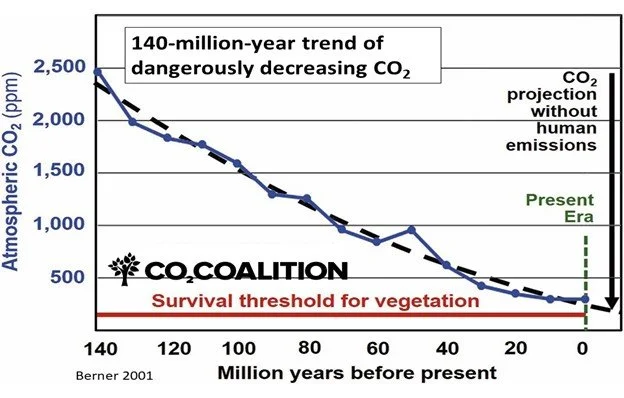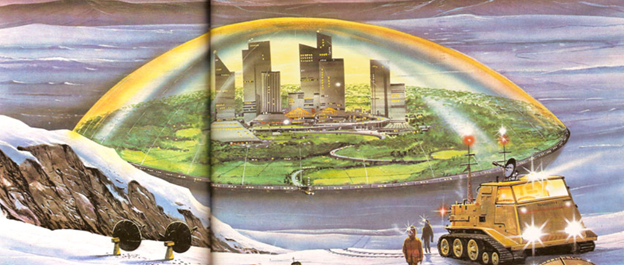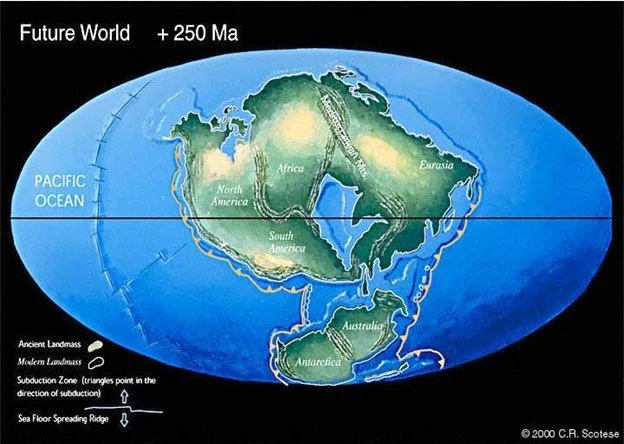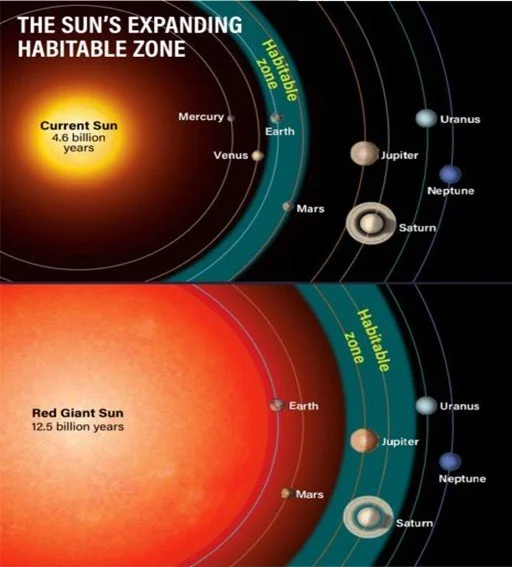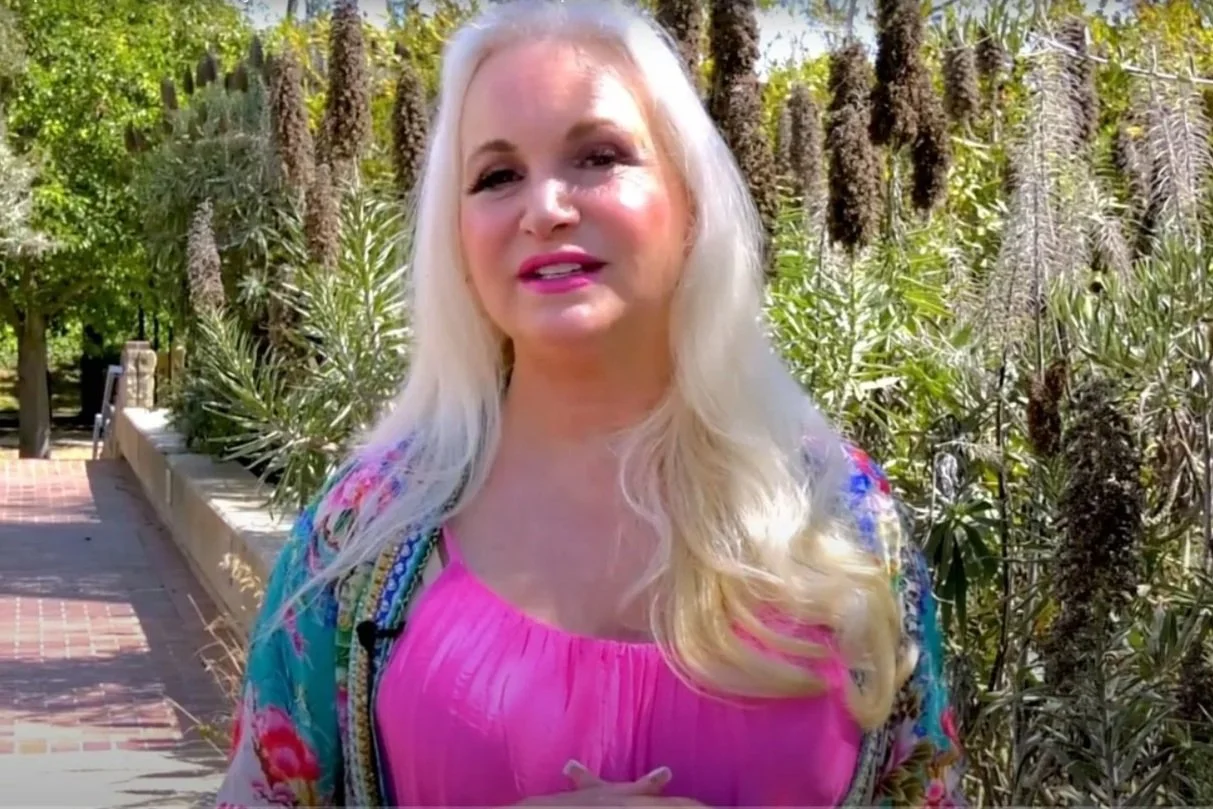Future Earth By William Lama, Ph.D
We have seen that the laws of nature, the evolution of the universe, and the precise construction of the Solar System are all “tuned up” to enable life on Earth. We live in a fabulous place at a fabulous time.
Do You Believe in Magic? By William Lama, Ph.D — Palos Verdes Pulse
Our Goldilocks Planet By William Lama, Ph.D — Palos Verdes Pulse
These last articles focused on the past. We live now 4.5 billion years after the birth of the Earth (4:30 on the clock) in the Holocene interglacial warm period that has lasted for some 12,000 years. In those good times Homo Sapiens flourished, became civilized and created worldwide industry and commerce. And Twitter.
But the pleasant interval may soon come to an end.
To comprehend the future, first we need to look to the past, and then factor in the long-term effect of plate tectonics on the location of the continents, and then the evolution of our Sun. Let’s begin with the past.
Hot House or Ice House
During the life of the Earth its climate has alternated between a frigid "Ice House" - like the current Quaternary Ice Age, and a steaming "Hot House" - like the world of the dinosaurs (that ended in the Cretaceous period). Climate History (scotese.com)
The swing in average Earth temperature from an Ice House to a Hot House is about 15 degrees Centigrade. The most severe glaciation in the geologic record occurred around 700 million years ago, when glaciers covered the Earth, a condition known as “Snowball Earth." Our current Ice Age began around 35 million years ago. The Quaternary is the coldest period in at least 250 million years.
For most of Earth's history, it was about 10°C warmer than today. - CO2 Coalition
The prevailing theory is that Carbon Dioxide (CO2) is the driver of climate: increasing CO2 warms the planet. However, that simpleminded hypothesis is refuted by the continuous long-term decrease of CO2 for the last 140 million years (See the graph below), while the Earth experienced Hot House conditions (the graph above). In fact, the concentration of CO2 is approaching the bare survival threshold for vegetation. It is quite fortunate that the recent positive blip of CO2 has been greening the Earth.
And thank heaven for the greenhouse effect that keeps the Earth 30°C warmer than it otherwise would be. Instead of the average temperature being a freezing -15°C, it is a livable +15°C. Carbon dioxide contributes 10% of the effect or +3°C.
The Logarithmic Effect of Carbon Dioxide – Watts Up With That?
More recently, for at least two million years, the “icicle eras” have been cyclic with a period of roughly 100,000 years. (~ 1/3 sec on the Earth Clock) The ice cycle mimics the eccentricity of the Earth’s orbit that oscillates from nearly circular now to more elliptical in 50K years, and then back to near circular.
Note that our hearty ancestors lived and survived in the icicle era that ended 12,000 years ago. The Holocene interglacial that we live in should end in a few hundred years unless it’s prolonged by the burning of fossil fuels.
The Future Ice House
Life for most people on Earth during the next icicle era will be “nasty, brutish and short.” First world countries could build glass domed cities to protect residents from the bitter cold and wind. Of course, these would be south of New York and Chicago which will be buried by mile thick ice.
Europe would fare even worse than the US since it’s farmland and major cities are 10 degrees farther North compared to NY and Chicago. Projections indicate that Europe would be able to feed only 5% of its next ice era inhabitants. The Great Climate Flip-Flop - The Atlantic
The Future Hot House
American astronomer Harlow Shapley inspired one of Robert Frost’s most famous poems by telling him that the world would end either due to an expansion of the Sun or by slowly freezing in deep space. Frost favored fire.
Some say the world will end in fire,
Some say in ice.
From what I’ve tasted of desire
I hold with those who favor fire.
- Robert Frost, 1920
Long after the current Ice Age ends, in about 250 million years (15 min. on the Earth Clock), plate tectonics will have reconstructed the “Pangaea” supercontinent of 250 million years ago. (See Future World below)
The Earth is then expected to have a hothouse climate like the Permian period with an average temperature of 28°C (82°F). The glassed-in cities of “Pangaea Proxima” (in 250 million years) will need to be air conditioned.
The Giant Sun
The Sun has been brightening for a very long time. In a billion years or so the Earth will heat up to unlivable temperatures. In 3.5 billion years (8:00 on the Earth Clock) the oceans will boil and evaporate. Then in 7-8 billion years, the Sun will exhaust the hydrogen fuel in its core and start burning helium, forcing its transition into a “red giant” star. Its outer layers will expand to beyond the Earth.
The red giant Sun will engulf Mercury, Venus, and Earth, as shown below. All life on Earth will end at noon on the Earth Clock.
Is there hope for humanity? Sure, we just have to move. The new habitable zone will stretch well beyond Jupiter. Formerly icy worlds will melt, and liquid water will be available. Perhaps planets in the Kuiper Belt (just past Neptune) such as Pluto or Eris will be our new home. Will Earth survive when the sun becomes a red giant?
But remember:
“It's tough to make predictions, especially about the future.” ― Yogi Berra
Dr. William Lama has a PhD in physics from the University of Rochester. Taught physics in college and worked at Xerox as a principle scientist and engineering manager. Upon retiring, joined the PVIC docents; served on the board of the RPV Council of Home Owners Associations; served as a PV Library trustee for eight years; served on the PV school district Measure M oversight committee; was president of the Malaga Cove Homeowner's Association. Writes about science, technology and politics, mostly for his friends. email: wlama2605@gmail.com



